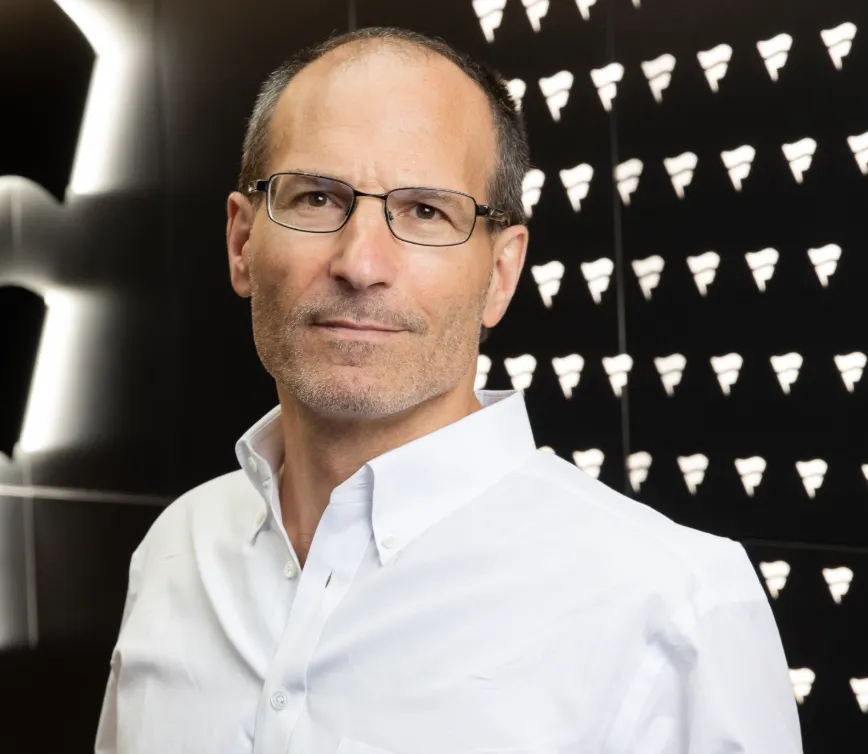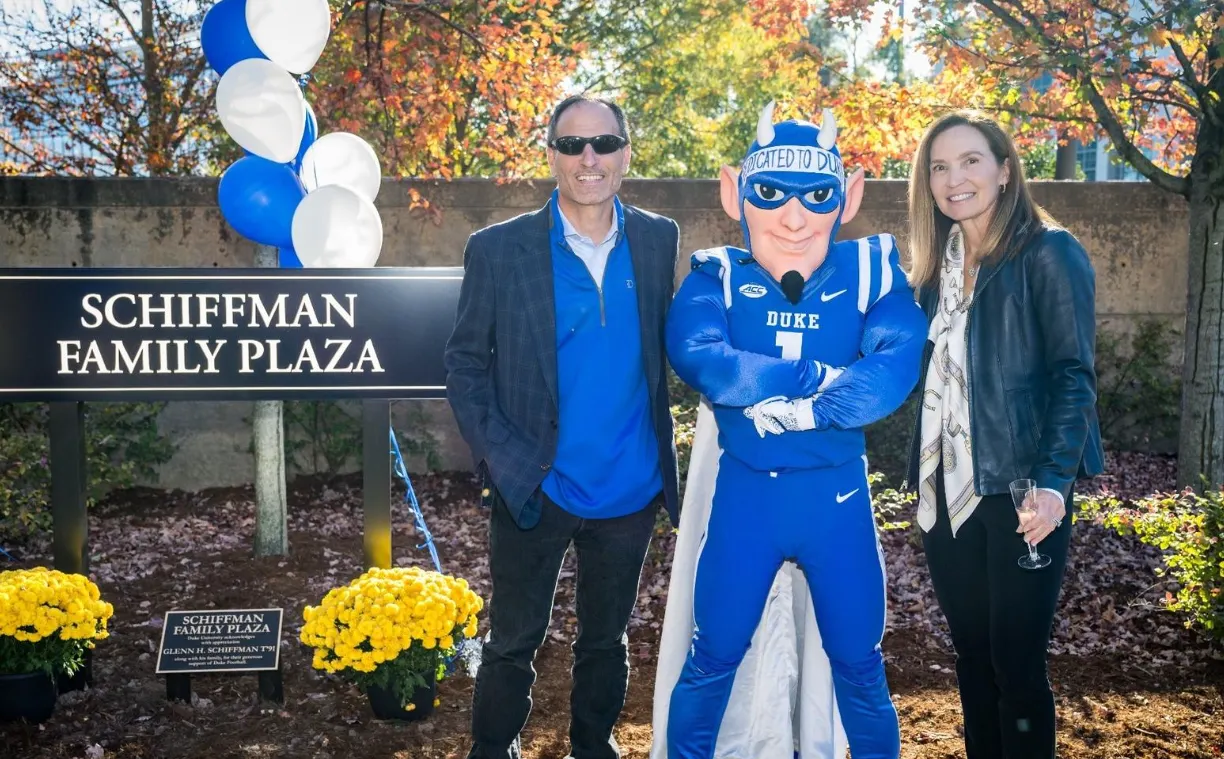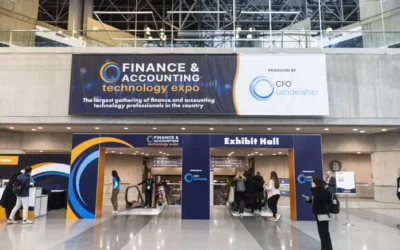As CFO of Fanatics, Glenn Schiffman oversees financial strategy across the company’s global sports platform, which spans e-commerce, licensed merchandise, collectibles, trading cards and now live events with its Fanatics Fest. Leading a team of divisional CFOs, he focuses on capital allocation, supporting operators, addressing unique business challenges and driving value across the organization.
In a recent interview, Schiffman shares how Fanatics approached its second Fanatics Fest in New York City, why finance led a rapid overhaul of working capital in response to trade disruption, how he thinks about data accuracy versus decision-making speed and how his philanthropic approach mirrors his long-term mindset in corporate finance.
Glenn Schiffman

Executive vice president and CFO, Fanatics
First CFO Position: 2016
Notable previous employers:
- Angi
- IAC
- Guggenheim Partners
- Nomura
This interview has been edited for brevity and clarity.
ADAM ZAKI: Your organization’s recent event, Fanatics Fest, is now in its second year. What was finance’s role in planning the event, and what did you learn the second time around?
GLENN SCHIFFMAN: The first year, we didn’t have experience with an event like this, and we had to galvanize Fanatics — a company with a lot of employees, multiple businesses and countless touch points with leagues, athletes and partners — to basically will it into existence, and quickly. That first event was a little ad hoc. We wanted it to be an incredible experience for the fan, and while I wouldn’t quite say we were making it up on the fly, we were learning, experimenting and iterating as we went.
The feedback from fans for the first Fanatics Fest was incredible, and like everything we do here, the focus immediately shifted to making it better. We held post-mortems right away, talking about what worked and what needed to improve. We partnered with our league, brand and athlete relationships to make 2025 the best possible experience for fans.
My role was as part of the senior management team — pushing ideas, driving outcomes and ultimately green-lighting the capital to fund the event. Last year, we lost money, but it was worth every dollar. This year we were roughly break-even to a slight loss, based on ad revenue, ticket sales and merchandise. But the brand impact, fan engagement and partner value far outweigh the dollars invested. This event is a give-back to fans.
The world had never seen a pan-sports festival with 300-plus athletes, dozens of brand activations and 125,000 attendees. Finance’s role was what it always is: allocate and monitor capital, measure returns both in dollars and brand impact, and support operators in making the best decisions once the investment is approved.
How do you balance giving divisional CFOs autonomy with knowing when to step in?
We’re fortunate because our divisional CFOs are outstanding. Any one of them could be CFO of a standalone public company. The same is true of our CEOs.
Where I step in is where there’s a problem to solve, a place I can be a force multiplier. Sometimes that means rolling up my sleeves and digging in on a big issue, offering insights, asking questions and simply putting the weight of my office behind an initiative. It’s usually the bigger or cross-platform challenges, or something that just looks odd and needs light shed on it.
I partner with the CFOs and CEOs throughout the company. I offer help, give them necessary insights, then get out of the way so they can operate. Then I move on to the next opportunity or optimization.
There are also obvious top-down areas at Fanatics. We handle all M&A centrally — my team leads that and partners with the divisional CFOs and CEOs while they operate the businesses. We also lead investor relations, capital raising, centralized HR, most legal matters, top-down accounting, internal audit, IT and information security. These functions benefit from scale, pattern recognition and give us a way to share best practices across the organization.
It’s also a two-way street. Sitting at the holding company doesn’t just put us in a position to offer insights or dispense wisdom; it also allows us to learn things from the businesses that make us better, and allows us to help the divisions learn from each other. Great people make great people better, and everyone returns that favor.
With tariffs and other disruptions creating new complexities for supply chain finance and working capital, how has Fanatics improved its working capital efficiency without compromising customer experience or product reliability?
I was actually talking to an investor about this over dinner last night, and what I’ve always said in my career is: Never waste a good crisis.
COVID gave all of us immediate, on-the-job training in managing crises and radically changing business environments. That practice came in handy in April this year, and it forced us to accelerate a couple of years’ worth of introspection about our supply chain into days or weeks. We had to spring into action, and it helped us understand exactly where everything we sold was coming from — every supply, every product – at a granular level.
It turned out the bark of tariffs is probably going to be worse than the bite, as deals are being cut and the economy has shown real resilience. Stimulus from the Big Beautiful Bill helped as well. But the lesson from COVID stuck. Everything was ripped apart, but we were able to truly understand it as a result. That’s the fun of business. Once you see it in that detail, you can work on the optimizations and the solutions.
On working capital specifically, within 48 hours, we pulled the files on every single vendor and their terms. We asked ourselves: Are these the right terms? Is there an opportunity to increase the amount of capital we get from working capital? We summarized everything in a deck in 48 hours, looked at where we stood, and then went vendor by vendor. We created a task force and went after it.
As CFO, I have the privilege of going wherever the problems are. That weekend, we decided to rip apart working capital. The best practices we implemented then will benefit us for years, and the tone you set by putting something on your shoulders and driving change is priceless.
We took the same approach to the supply chain: understanding exactly where products are sourced, by country and by factory, and knowing the exact pricing on each. You usually understand this in a general, rolled-up sense, but a crisis forces you to move from the telescope to the microscope. And when you do that — when you go deep enough in any specific area — you always find opportunity.
That’s what the combination of COVID and the tariff environment gave us: an urgent reason to examine every detail, optimize our working capital, and build resilience without sacrificing the customer experience.
When it comes to technology and data, some CFOs chase what they call a “single source of truth,” while others say that’s impossible and focus on extracting insights from imperfect data. How do you approach that balance?
The old saying is true: statistics don’t lie, but statisticians do.
“Don’t just tell me the forecast — tell me to carry the darn umbrella when I walk across the street.”

Glenn Schiffman
EVP and CFO, Fanatics
From an analytical perspective, you need to get data quality to about 90%. Once you’re there, you can make meaningful insights. In some areas of our business, we’ve achieved that, and in other areas, we’re still working toward it; every CFO on the planet would say the same. The key is understanding that once you reach that 90% threshold, the return on effort to chase the last 10% is minimal.
I want to be clear that this is analytical data, not accounting data. Accounting must be 100% precise. But when you’re using data for decision-making, you get diminishing returns on trying to make it perfect. At 90%, you effectively have a single source of truth that helps guide decisions.
Too often, companies get caught in their own process. They form steering committees, schedule endless Zooms, and create PowerPoints, all in pursuit of perfect data. Forget all that. Get to a reliable baseline, then focus on analysis and insight. The job of finance is to use numbers to help the business make better decisions — nothing more and nothing less.
I’ve seen people twist themselves in knots worrying about whether the data is flawless instead of asking the right questions and finding actionable insights. You’ll never have perfect information, but you can get close enough to make smart choices for the future. It’s like weather forecasting: You may not know for certain whether it’s going to rain, but you should know with some reasonable degree of probability whether to bring an umbrella. Don’t just tell me the forecast — tell me to carry the darn umbrella when I walk across the street.
You’ve created multiple endowments and been active in philanthropy. Does that long-term mindset mirror the way you approach capital allocation and your work as a CFO, or do you keep those parts of your life separate?
No, I think it’s 100% aligned and 100% consistent.
I’ve set up at least four endowments. One supports women’s athletics at Washington and Lee University, where my two daughters went. Another at Duke provides a football scholarship for someone from an underrepresented community. I created a third for the Valerie Fund, which is an incredible organization that helps children with pediatric cancer. And the fourth is also at Duke, dedicated to research that I hope will one day lead to a cure for pediatric cancer.

The reason I’ve done this is that I wanted the impact to be permanent. I wanted my money to work as hard as I do — to generate more money in the future to help solve problems. In my mind, philanthropy has two buckets: You either alleviate pain or you spread joy. Creating permanent capital lets me do both.
It’s exactly the same mindset I use in finance. Capital allocation is simple: you invest in a business with the expectation that the capital will generate more capital in return. That’s what I’m doing philanthropically. I donate capital with the hope that it grows, spreads more joy and alleviates more pain over time.
That’s why I don’t like one-time, expendable donations. I want my money to keep working forever. Hopefully, my family will continue to support and grow these endowments so that, over the next many generations, they can become a lasting force for good.





